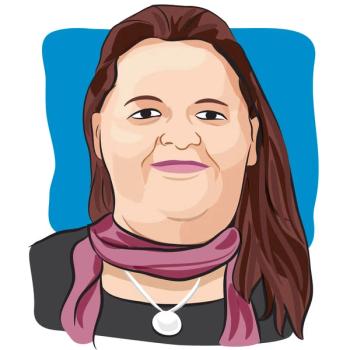
New Personalized Treatment Method Developed to Improve Outcomes in Older Multiple Myeloma Patients
Researchers have developed Myeloma Drug Sensitivity Testing to determine which medications will be most effective with minimal side-effects.
Precision medicine that identifies the most effective medications with the least amount of side effects may improve outcomes in older, frail patients with multiple myeloma, according to a report in a recent issue of Aging AND Cancer, published in affiliation with the Samuel Waxman Research Foundation.
“Personalized or precision medicine means that we kind of adapt those approaches to be more specific for the patient, treating the patient's own cancer,” said study author Dr. Daniel Sherbenou, physician scientist and assistant professor of hematology at the University of Colorado, in an interview with CURE®. “Cancers are very diverse, and that will help ultimately to increase the benefit that we give our patients and minimize the side effects from medications that may work for the general population on average, but don't help that particular person's disease.”
Older patients with multiple myeloma are less likely to be able to tolerate three-drug regimens, creating less room for error with two-drug combinations, said Sherbenou. Additionally, patients are less likely to respond or have a deep response to the treatment.
“If we could help design two-drug regimens that were more directed to that patient, you're avoiding the side effects that you might incur from having three-drug regimens, but still getting possibly the same bang for your buck as you would a three-drug regimen, just without the added toxicities or the added costs of that extra drug that may not help that patient,” said Sherbenou.
Additionally, improvements made in the treatment of multiple myeloma in recent decades have had not had much impact on survival outcomes of the older population, according to the report. This can be attributed to undertreatment, not moving onto subsequent lines of therapies upon relapse to the same degree as younger patients and biases in clinical trials towards the study of younger, more fit patients.
“The greatest single disparity we have is the aging population in medicine,” said Dr. Samuel Waxman, professor at Mount Sinai School of Medicine and founder and CEO of the Samuel Waxman Cancer Research Foundation, in an interview with CURE®. “It starts in the laboratory, even the science that we're talking about all the time, we do things in young mice and young animals. And under conditions that are not in the microenvironment of an aged organ.”
Even if better treatments become available and lower mortality rates are achieved, cancer incidence will continue to increase, Waxman added, if a lack of focus on the aging population in research settings persists.
“The number of people that are going to get cancer is just going to keep going up, because we have an aging population throughout the world,” said Waxman. “It's a topic that has not been paid attention to enough, from a funding point of view. Funding for looking at the linkage between aging and cancer is just barely on the drawing board.”
Sherbenou and fellow researchers developed a method of phenotype-based personalized medicine called Myeloma Drug Sensitivity Testing (My-DST) and demonstrated its use in a case study. The patient was a 72-year-old man with multiple myeloma who donated a research sample that My-DST was then performed on. The testing revealed the patient’s sensitivity to proteasome inhibitors and dexamethasone but resistance to immunomodulatory drugs.
Due to the patient’s age and functional status, it was decided to treat him with a two-drug combination. After two cycles of therapy only achieved a minor response, he was switched to a different two-drug combination. He achieved a very good partial response, which had been predicted by his My-DST result.
The patient did well overall over the next two years but began to have mild biochemical progression of his serum IgA-lambda paraprotein levels. He then developed a decline in cognitive function and died of unrelated causes.
“Although his survival time from diagnosis was relatively short, one hope for older patients with myeloma is that they may receive tolerable, effective treatments and ultimately die of natural causes, and in that sense his treatment was successful,” the authors wrote.
Research in this area is ongoing, with a goal of eventually making the tests accessible to patients. However, it must go through multiple phases of FDA approval, said Sherbenou.
“The leap that we're trying to make is to take a tiny snippet of someone's cancer, put it in the cell culture, basically, and then make the leap to say what worked well in this kind of laboratory setting is going to work on the whole patient's cancer,” said Sherbenou. “It's not a test that you can go to your doctor right now and say that you want, but that's ultimately the goal. It may take us a couple of years to get there, but that's what we're working towards.”
“Data is very difficult to interpret,” added Waxman. “When you're adding one drug, it's difficult. To be adding combinations it becomes confounding from mathematical point of view. So it's a quest that takes time effort, commitment, and still has to get not only through this phase, but will have to start to be correlated with response in people.”
For more news on cancer updates, research and education, don’t forget to





